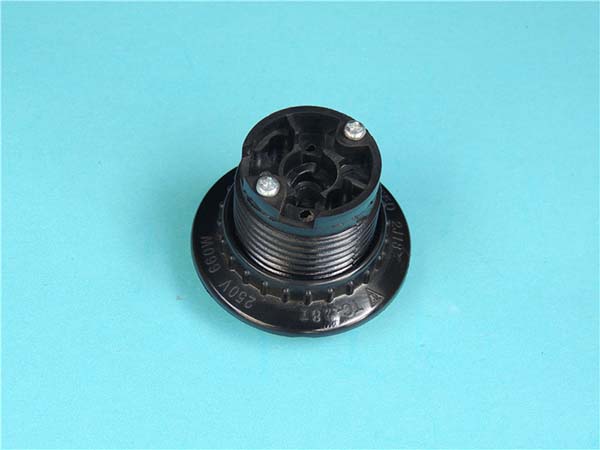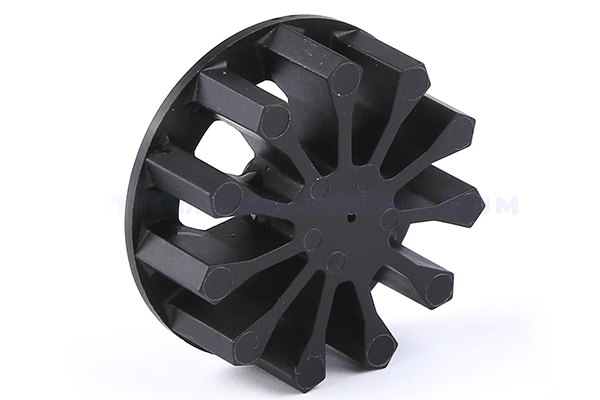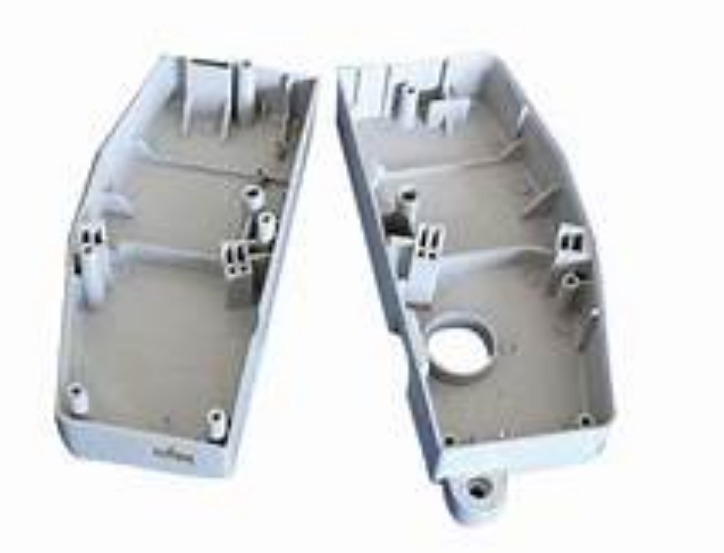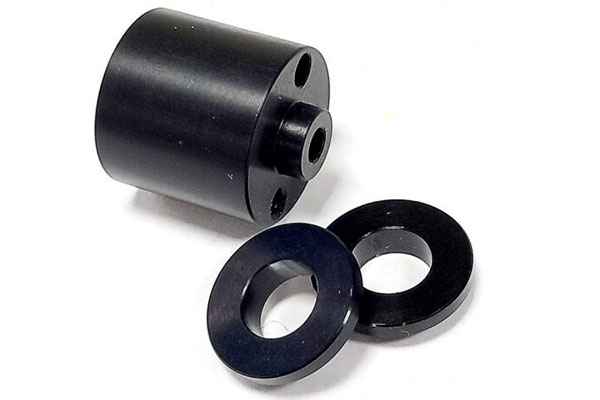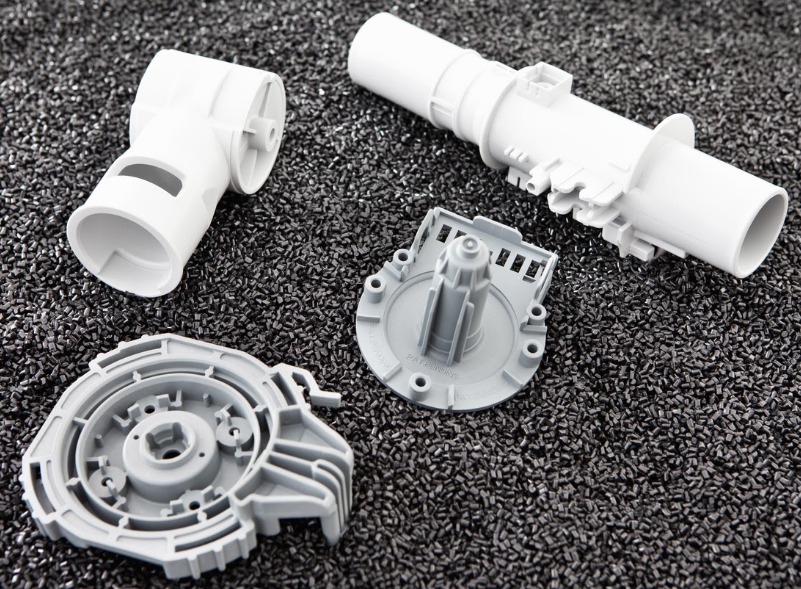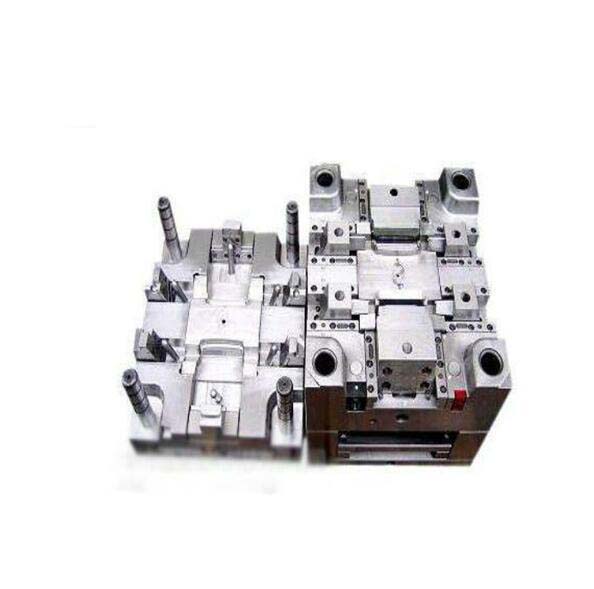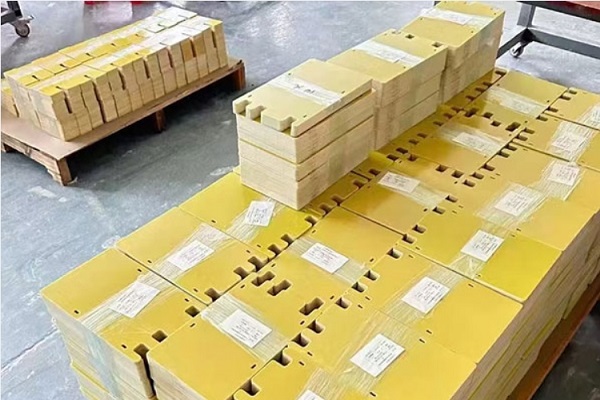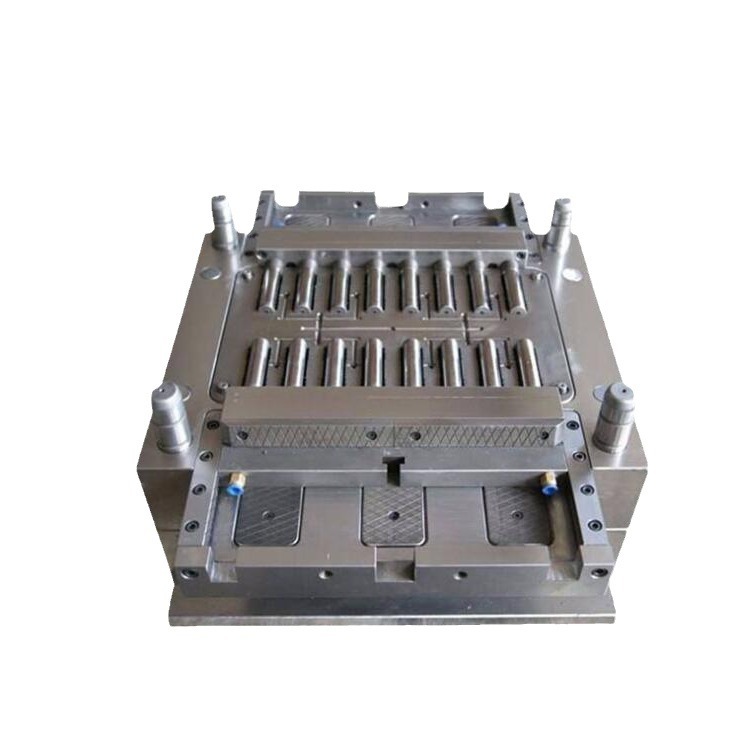Introduction
Welcome to the fascinating world of injection molding plastic factories! If you're new to this industry, you're in for an exciting journey. Injection molding is a widely used manufacturing process that transforms raw plastic materials into a vast array of products we use in our daily lives, from small electronic components to large automotive parts. Understanding how an injection molding plastic factory operates is crucial whether you're an entrepreneur looking to start a product line, a student exploring manufacturing options, or simply someone curious about the production processes behind everyday items. This guide will walk you through the fundamental aspects of an injection molding plastic factory, helping you build a solid foundation in this dynamic field.
What is an Injection Molding Plastic Factory?
1. Definition and Concept
An injection molding plastic factory is a manufacturing facility that specializes in the production of plastic products through the injection molding process. Injection molding is a high - volume manufacturing method where molten plastic is injected into a mold cavity under high pressure. Once the plastic has cooled and solidified within the mold, the mold is opened, and the finished plastic part is ejected. This process is highly versatile and can produce a wide range of products, from tiny plastic gears in watches to large automotive bumpers. The key concept behind an injection molding plastic factory is to efficiently transform raw plastic materials, usually in the form of pellets, into value - added, customized plastic products that meet various industry and consumer needs.
2. Key Components and Equipment
- Injection Molding Machines: These are the workhorses of the factory. Injection molding machines come in different sizes and capacities, with clamping forces ranging from as low as 20 tons for small - scale production to over 5000 tons for large - scale industrial applications. Their primary function is to heat the plastic pellets until they reach a molten state, inject the molten plastic into the mold at high pressure, and then hold the mold closed while the plastic cools and solidifies. For example, a small - sized injection molding machine might be used for producing plastic toys or small electronic components, while a large - scale machine is suitable for manufacturing industrial - grade plastic containers or automotive parts.
- Molds: Molds are custom - made tools that determine the shape and size of the final plastic product. They are typically made of steel or aluminum due to their durability and heat - resistance properties. Molds can be single - cavity (producing one part per cycle) or multi - cavity (producing multiple parts per cycle). A simple mold for a plastic bottle cap may have a single cavity, while a mold for manufacturing small plastic connectors might have 16 or more cavities to increase production efficiency. The design of the mold, including the shape of the cavity, the gating system (which controls the flow of molten plastic into the cavity), and the cooling channels (to speed up the solidification process), is crucial for the quality and production speed of the plastic parts.
- Auxiliary Equipment: This includes material handling systems such as hoppers for storing and feeding plastic pellets into the injection molding machine, dryers to remove moisture from the plastic pellets (since moisture can cause defects in the final product), and granulators for recycling scrap plastic back into usable pellets. For instance, a desiccant dryer can reduce the moisture content in hygroscopic plastics like nylon to an acceptable level, ensuring high - quality parts free from surface defects such as silver streaks. Additionally, robots or automated part - removal systems are often used to take the finished parts out of the mold quickly and accurately, increasing production speed and reducing the risk of human error.
The Injection Molding Process Demystified
1. Step - by - Step Breakdown
- Plastic Material Preparation: The first step is to select the appropriate plastic material. There is a wide variety of plastics available, each with its own unique properties. For example, ABS (Acrylonitrile Butadiene Styrene) is known for its strength and impact - resistance, making it suitable for products like electronic housings. The plastic is usually in the form of pellets. If the plastic is hygroscopic (such as nylon), it must be dried thoroughly to remove moisture. Moisture in the plastic can cause defects like bubbles or voids in the final product. A typical drying process for nylon might involve heating the pellets to around 80 - 100°C for 2 - 4 hours in a desiccant dryer.
- Heating and Melting: The plastic pellets are fed into the hopper of the injection molding machine and then into the heating barrel. Inside the barrel, the plastic is heated by electric heaters or other heating elements. The temperature is carefully set according to the type of plastic. For instance, polyethylene (PE) typically melts at a temperature range of 120 - 200°C, while polycarbonate (PC) requires a higher temperature range of 250 - 320°C. As the plastic moves along the screw in the barrel, it is continuously sheared and mixed, which helps in achieving a uniform molten state.
- Injection: Once the plastic is fully molten, the injection unit of the machine comes into action. The screw in the barrel acts as a piston, pushing the molten plastic through the nozzle and into the mold cavity at high pressure. The injection pressure can range from 50 - 200 MPa, depending on the complexity of the mold and the plastic material. For a small, simple plastic part, a relatively lower injection pressure of around 50 - 80 MPa might be sufficient. However, for a large and intricate automotive part, the injection pressure could be as high as 150 - 200 MPa to ensure that the molten plastic fills every corner of the mold cavity completely.
- Cooling and Solidification: After the mold cavity is filled with molten plastic, the cooling process begins. The mold is equipped with a cooling system, usually consisting of channels through which a coolant (such as water or a water - glycol mixture) flows. The cooling time varies based on the thickness and size of the plastic part. A thin - walled plastic cup might cool and solidify in just a few seconds, while a thick - walled industrial component could take several minutes. During this stage, the plastic transitions from a molten state to a solid state, taking on the shape of the mold cavity.
- Mold Opening and Part Ejection: Once the plastic part has cooled and solidified sufficiently, the mold opens. The two halves of the mold (the stationary and the moving half) separate. An ejection system, which can be mechanical (using ejector pins) or hydraulic, then pushes the finished plastic part out of the mold. Ejector pins are small rods that are strategically placed in the mold to ensure that the part is ejected evenly without getting damaged.
- Post - processing: The ejected plastic part may undergo post - processing operations. This can include trimming any excess plastic (flash) that might have formed during the injection process, polishing to improve the surface finish, and assembly with other components. For example, a plastic toy might have small flash around its edges that need to be carefully trimmed, and then it may be assembled with other parts like wheels or accessories.
2. Parameter Control
- Temperature Control: Temperature is a crucial parameter in injection molding. The barrel temperature affects the viscosity of the molten plastic. If the temperature is too low, the plastic will be too viscous, leading to incomplete filling of the mold cavity, short shots, and poor surface finish. On the other hand, if the temperature is too high, the plastic may degrade, resulting in discoloration, brittleness, and a loss of mechanical properties. The mold temperature also plays a significant role. A higher mold temperature can improve the surface finish of the part, reduce internal stresses, and promote better flow of the molten plastic. However, it can also increase the cooling time and potentially lead to part shrinkage. For example, for a high - gloss plastic product like a smartphone case, a relatively higher mold temperature in the range of 60 - 80°C might be used to achieve a smooth and shiny surface.
- Pressure Control: Injection pressure, as mentioned earlier, is essential for filling the mold cavity. But it's not just the initial injection pressure that matters. The holding pressure, which is applied after the mold is filled, helps to compensate for the shrinkage of the plastic as it cools. If the holding pressure is too low, the part may have sink marks or voids. If it's too high, it can cause excessive stress in the part, leading to warping or cracking. The pressure profile throughout the injection and holding phases needs to be carefully optimized. For instance, in the injection of a plastic bottle, the injection pressure might be high initially to quickly fill the mold, and then the holding pressure is adjusted to maintain the shape and prevent any deformation during cooling.
- Speed Control: The injection speed affects how quickly the molten plastic fills the mold cavity. A fast injection speed can be beneficial for filling complex molds with thin - walled sections, as it reduces the risk of the plastic solidifying before the cavity is completely filled. However, if the injection speed is too fast, it can cause turbulence in the molten plastic, leading to air entrapment, weld lines, and a poor - quality finish. In contrast, a slow injection speed may be suitable for simple molds or when dealing with plastics that are sensitive to shear stress. For example, when molding a large, flat plastic panel, a slower injection speed might be used to ensure a smooth flow of the plastic and avoid any defects.
Types of Plastics Used in Injection Molding
1. Common Plastic Materials
- ABS (Acrylonitrile Butadiene Styrene): ABS is a popular engineering plastic. It combines the strength and heat - resistance of acrylonitrile, the toughness of butadiene, and the processability of styrene. With high impact - resistance, it can withstand significant force without breaking. For example, it is commonly used in the production of electronic device housings, such as those for laptops and gaming consoles. Its surface finish can be easily modified, making it suitable for products where aesthetics matter. Additionally, ABS has good chemical - resistance, which allows it to be used in environments with exposure to certain chemicals.
- PP (Polypropylene): PP is a semi - crystalline thermoplastic polymer. It is known for its high strength - to - weight ratio, making it lightweight yet durable. PP has excellent heat - resistance, with a melting point typically around 160 - 170°C, which enables it to be used in applications that require exposure to relatively high temperatures, like microwave - safe food containers. It also has good chemical - resistance, especially against acids and alkalis, and is often used in the automotive industry for interior components such as dashboards and door trims due to its cost - effectiveness and ease of processing.
- PE (Polyethylene): PE is a widely used plastic with different types based on density. Low - density polyethylene (LDPE) is soft, flexible, and has excellent transparency, making it ideal for applications like plastic bags, food packaging films, and some types of bottles. High - density polyethylene (HDPE), on the other hand, is more rigid and has higher strength. It is commonly used for making pipes (such as water and gas pipes), large - scale storage containers, and heavy - duty plastic products. PE also has good chemical - resistance and is non - toxic, which makes it suitable for food - contact applications.
- PVC (Polyvinyl Chloride): PVC is a versatile plastic. Rigid PVC is highly durable and has good weather - resistance, so it is frequently used in construction applications, such as window frames, pipes, and siding. Soft PVC, which is made by adding plasticizers, is flexible and is often used for products like wire and cable insulation, inflatable products, and some types of footwear. However, PVC production and disposal can have environmental concerns due to the presence of chlorine.
- PC (Polycarbonate): PC is a high - performance engineering plastic with outstanding impact - resistance, even better than ABS in many cases. It also has excellent optical properties, high transparency, and good heat - resistance, with a melting point in the range of 250 - 320°C. PC is commonly used in the production of safety equipment like helmets, optical lenses, and electronic displays. Its high - strength and heat - resistance properties also make it suitable for automotive headlight lenses and some engine - related components.
2. Choosing the Right Plastic
Selecting the appropriate plastic material for injection molding is crucial as it directly impacts the quality, functionality, and cost of the final product. Here are some key factors to consider:
| Plastic Material | Cost (Relative) | Strength | Heat - resistance | Chemical - resistance | Application Examples |
| ABS | Medium | High impact - resistance | Moderate (up to around 90 - 110°C) | Good against many chemicals | Electronic housings, toys |
| PP | Low | High strength - to - weight ratio | High (melting point around 160 - 170°C) | Excellent against acids and alkalis | Automotive interiors, food containers |
| LDPE | Low | Low - medium, flexible | Low (softens at relatively low temperatures) | Good | Plastic bags, food packaging films |
| HDPE | Low - medium | High, rigid | Moderate (higher than LDPE) | Good | Pipes, storage containers |
| PVC (Rigid) | Medium | High, durable | Moderate | Good weather - resistance | Construction products like window frames |
| PVC (Soft) | Medium | Low, flexible | Low | Varies depending on plasticizers | Wire insulation, inflatable products |
| PC | High | Very high impact - resistance | High (melting point 250 - 320°C) | Good | Safety equipment, optical components |
- Product Requirements: Consider the mechanical properties needed, such as strength, flexibility, and impact - resistance. If the product will be exposed to high temperatures, choose a plastic with good heat - resistance like PC or PP. For products that need to be chemically resistant, materials like PE, PP, or PVC (depending on the chemicals involved) could be suitable.
- Cost: The cost of the plastic material can vary significantly. If cost is a major factor and the product doesn't require high - performance properties, materials like LDPE or PP might be more appropriate. However, for high - end products with strict performance requirements, the higher cost of materials like PC might be justifiable.
- Aesthetic and Surface Finish: Some plastics, like ABS, can be easily textured or painted to achieve a desired appearance. If a high - gloss or smooth surface finish is required, materials with good flow properties during injection molding should be considered.
Yigu Technology's Perspective
As a non - standard plastic metal products custom Supplier, Yigu Technology understands the significance of injection molding plastic factories. With years of experience in the field, we have seen firsthand the impact of high - quality injection molding on product success. Our expertise lies in providing customized solutions tailored to each client's unique needs.
We possess a team of skilled engineers and advanced manufacturing equipment. This enables us to handle complex design requirements with ease. Whether it's developing a unique mold or precisely controlling the injection molding process, we ensure every detail is perfect. Quality control is at the heart of our operations. We implement strict inspection procedures at every stage, from raw material selection to the final product, to guarantee that our clients receive products of the highest standard. Our commitment to innovation and customer satisfaction makes us a reliable partner in the injection molding industry, helping businesses bring their product ideas to life efficiently and effectively.
